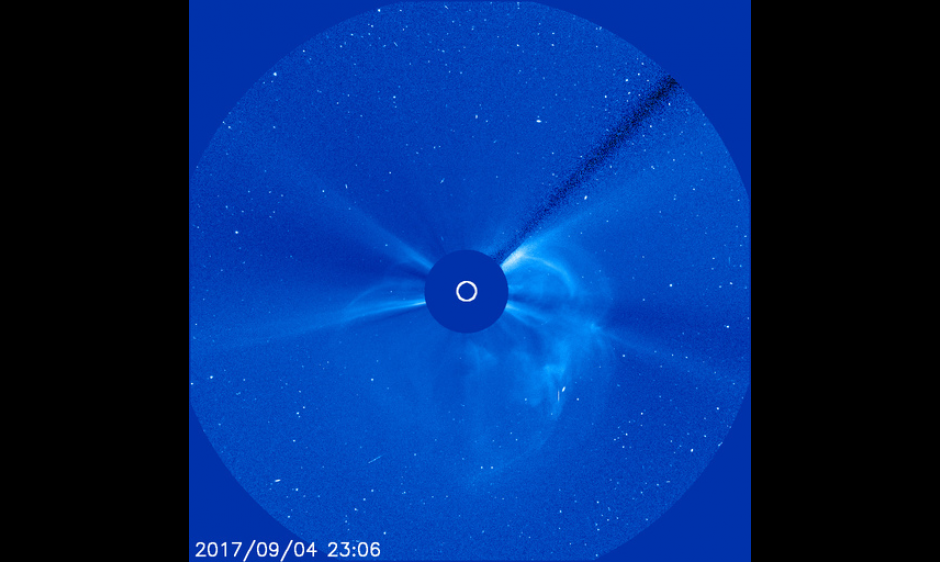
Coronal mass ejections (CMEs) are huge explosions of magnetic field and plasma from the Sun's corona. When CMEs impact the Earth’s magnetosphere, they are responsible for geomagnetic storms and enhanced aurora. CMEs originate from highly twisted magnetic field structures, or “flux ropes”, on the Sun, often visualized by their associated “filaments” or “prominences”, which are relatively cool plasmas trapped in the flux ropes in the corona. When these flux ropes erupt from active regions on the Sun (regions associated with sunspots and very strong magnetic fields), they are often accompanied by large solar flares; eruptions from quiet regions of the Sun, such as the “polar crown” filament eruptions, sometimes do not have accompanying flares.
CMEs travel outward from the Sun typically at speeds of about 300 kilometers per second, but can be as slow as 100 kilometers per second or faster than 3000 kilometers per second. The fastest CMEs erupt from large sunspot active regions, powered by the strongest magnetic field concentrations on the Sun. These fast CMEs can reach Earth in as little as 14--17 hours. Slower CMEs, typically the quiet region filament eruptions, take several days to traverse the distance from the sun to Earth. Because CMEs have an embedded magnetic field that is stronger than the background field of the solar wind, they will expand in size as they propagate outward from the Sun. By the time they reach the Earth, they can be so large they will fill half the volume of space between the Sun and the Earth. Because of their immense size, slower CMEs can take as long as 24 to 36 hours to pass over the Earth, once the leading edge has arrived.
CMEs that are traveling faster than the solar wind plasma’s fast mode wave speed (the space equivalent of the Earth’s sound speed) will generate a shock wave, just like an airplane traveling faster than the speed of sound generates a sonic boom. These shock waves accelerate charged particles ahead of them to create much of the solar radiation storm affiliated with large-scale solar eruptions. Often, the first sign of a CME hitting the Earth environment is the plasma density jump due to the shock wave’s passage.
The size, speed, direction, and density of a CME are important parameters to determine when trying to predict if and when it will impact Earth. We can estimate these properties of a CME using observations from an instrument known as a coronagraph, which blocks the bright light of the solar disk, just as the moon does in a total solar eclipse, allowing the outer solar atmosphere (chromosphere and corona) to be observed. CMEs show up as bright clouds of plasma moving outward through interplanetary space.
In order to predict the strength of the resulting geomagnetic storm, estimates of the magnetic field strength and direction are important. At the present time, the magnetic field cannot be determined until it is measured as the CME passes over a monitoring satellite. If the magnetic field direction of the CME is opposite to that of the Earth’s dipolar magnetic field, the resulting geomagnetic disturbance or storm will be larger than if the fields are in the same direction. Some CMEs show predominately one direction of magnetic field in their passage past the Earth, but most exhibit changing field directions as the large magnetic cloud passes over our relatively tiny magnetosphere, so most CMEs that impact the Earth’s magnetosphere will at some point have magnetic field conditions that favor the generation of geomagnetic storming with the associated auroral displays and geomagnetically induced currents in the ground.
Images courtesy of NASA/ESA SOHO mission.